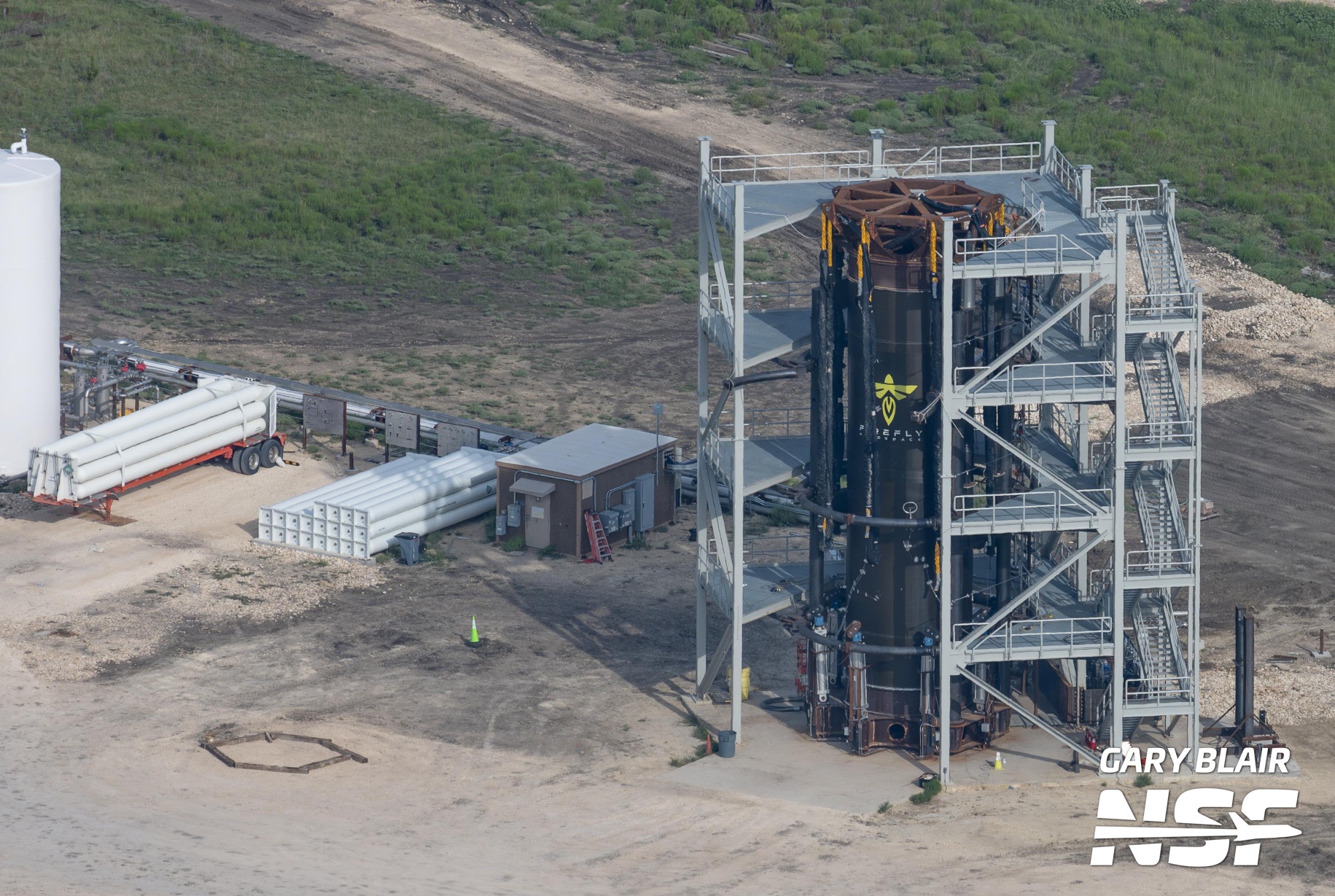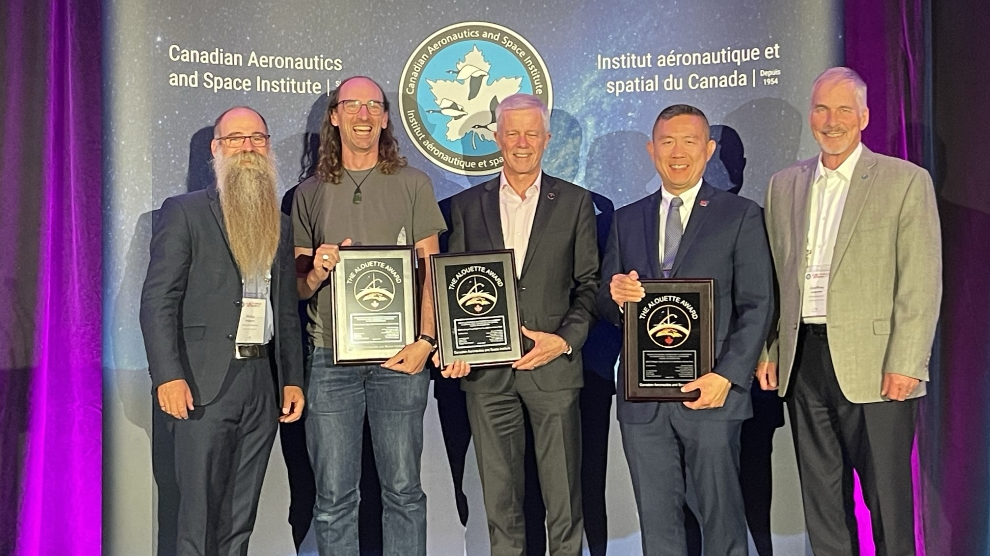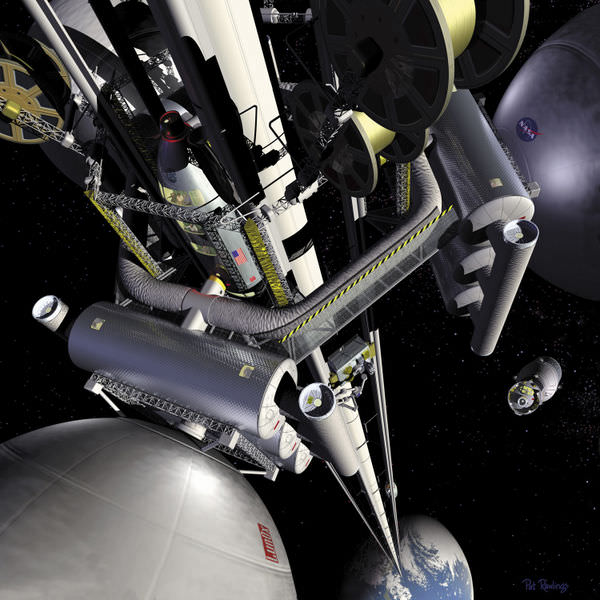*
As Firefly Aerospace prepares for its upcoming Alpha rocket launches, work continues apace on its next-generation Medium Launch Vehicle (MLV) rocket with its Miranda and Vira engines, utilizing its Briggs test site in Texas. MLV’s Chief Engineer, Miles Gray, showed NSF around the test site to update the status of the new vehicle and engines while also noting the vehicle is being designed with reusability in mind, involving a recovery that follows a similar path as SpaceX’s Starship Mechazilla catch system.
Since its revival in early 2017, the Texas-based company Firefly Aerospace has been hard at work staking its claim in the small satellite launch market. Having developed, tested, and flown its Alpha launch vehicle multiple times, Firefly is bolstering itself with other end-to-end systems, including on-orbit management and lunar services.
Now, Firefly is taking the next step toward building and launching bigger rockets with its Medium Launch Vehicle (MLV).
For Firefly, MLV will serve as a testament to the company’s growth over the years in terms of size and scope of capabilities. Whereas Alpha stands at 29.5 m in height, MLV will tower above it at 55.7 m; Alpha can launch just over 1,000 kg to low-Earth orbit (LEO), with MLV capable of up to 16,300 kg.

An artistic render of Firefly’s Medium Launch Vehicle/MLV in flight. (Credit: Firefly Aerospace)
While Firefly had to develop and construct the Alpha rocket independently as an in-house product, the company will receive substantial assistance on MLV from a major aerospace player.
In cooperation with Northrop Grumman, Firefly is knee-deep in developing MLV, with qualification testing on its carbon composite structures already underway. Said structures are scaled mainly up from those that make up the construction of the smaller Alpha rocket.
As seen as a key future consideration of the spaceflight industry, at least since SpaceX proved the technology, Firefly is also looking at reusability with MLV. The company has already downselected how they will approach this goal.
“The way we approach this is that anything that doesn’t have to be on the rocket shouldn’t be on the rocket. So that means we’re not starting with the idea that we should just put legs on the thing and land it in kind of the same way,” noted MLV’s Chief Engineer, Miles Gray. “So that means that we have a ground catch system that is in some way going to catch the rocket.”
Miles acknowledged that the idea is similar to SpaceX’s system but said that the company is still evaluating at least three different options, each with a varying degree of accuracy needed for the booster to land.
“We have maybe three different (types) of rough architectures we’re pursuing right now. All of them are putting in a similar amount of effort to just get them to a point where we can really say that’s the best one, and we can always look back at you know more traditional leg system to say like this is why this is better than this.”
SpaceX transitioned from the original plans to land Starship on its landing legs to the catch system that has since become famously known as Mechazilla.
After arriving overnight Starship B12 was lifted onto the Pad A OLM. interestingly, the chopsticks lifted the booster to the very top of the tower, in a possible test related to catch operations before being lowered. @NASASpaceflight
Starbase Live pic.twitter.com/flyDxSQnur— Elisar Priel (@ENNEPS) September 20, 2024
“Chopsticks, yeah, Mechazilla. I don’t think it will look exactly like that. There’s sort of one architecture that looks similar to that and then there’s one that is, there’s kind of two options there, right? You can either have the vehicle be really smart and able to sort of like hang itself on a wire or something like that, or you have something like the chopsticks that is itself kind of clever and is going to catch the rocket.”
“So we’re still going to do some kind of propulsive landing. The engines are going to be engaged right before it gets caught because you had to scrub off that speed some way. The only other way you can do that really is something like a parachute. Parachutes sort of inherently are going to put you in a very large area to land, which means that the vehicle has to have everything on the vehicle, which then at that point, you just put legs on it. There’s no point going down the road of airbags and complicated other stuff like that.”
The vehicle will also include grid fins, another well-known sight on rockets that conduct a propulsive return and landing. Unlike SpaceX, Firefly may also use the fins as a “hard point” for capturing the returning rocket.
“Anytime you’re designing a rocket, you always want to make sure that the mass that you’re doing, you know, when you put mass on the rocket, you want it to do two things. It’s kind of like playing chess. You don’t ever want to make a move that just does one thing. You want that move to actually make three things happen,” added Miles.
“So when you put an engine on the rocket, for a normal rocket, kind of all that does is make it go up, right? But if you have it on there already, you should be using that engine to land somehow. Because there’s a bunch of mass you’re carrying with you, all that propellant that you have with you is extra mass, so you want to be highly incentivized to use that. So some kind of propulsive landing is really desirable.”
“We basically know we’re gonna put grid fins on. Those grid fins are a hard point, they’re a natural hard point. There’s a bunch of mass there, no matter what. You can already hang the rocket from those. So you might as well catch some of those. So most of the catches that we’re looking at include the grid fins. Or something that is closely coupled to the hard point.”

Firefly Briggs from the air. (Credit: Gary Blair for NSF/L2)
In addition, the first MLV pressure and propellant tanks have been built and are about to be tested at Firefly’s 200-acre Rocket Ranch developmental facility in Briggs, Texas.
These were built using an Automated Fiber Placement (AFP) machine that can lay up more than 200 lbs of carbon fiber per hour. This allowed Firefly to produce the major structures for MLV in 30 days — much faster and cheaper than other processes.
To complement this and other MLV development processes, the company doubled the size of its Briggs campus from 90,000 square feet to more than 200,000 square feet. This saw the addition of two new manufacturing buildings and two new test stands — one for structural testing and another for engine qualification.
The test article, dubbed Shorty because it is shorter than a regular MLV first stage, will allow engineers to validate the manufacturing process of the MLV tanks without needing to build a complete first stage.
Firefly is taking many lessons and technologies acquired from its Alpha rocket and carrying it over to MLV, including the tap-off engine cycle that will be used on the uprated Miranda and Vira engines. This enables the company to rapidly build, test, and iterate on the larger vehicle more efficiently.

Miranda on the test stand at Briggs. (Credit: Tyler Gray for NSF)
Seven Miranda engines will boost the MLV off the launch pad. They have also been designed with capabilities such as deep throttling to aid the reusability approach.
The rocket will also retain some flight-proven systems from the Antares program, thereby providing additional upgrades. The first stage of MLV will feature many similarities to the booster stage for the Antares 330, which is also being co-developed by Firefly and Northrop Grumman.
All in all, the leap in performance from Alpha to MLV serves as a boon for Firefly’s business model — and leaves additional wiggle room for the company to introduce partial reusability into the system.
(Lead image: the Firefly Aerospace Rocket Ranch testing campus. Credit: Gary Blair for NSF/L2)





No comments! Be the first commenter?